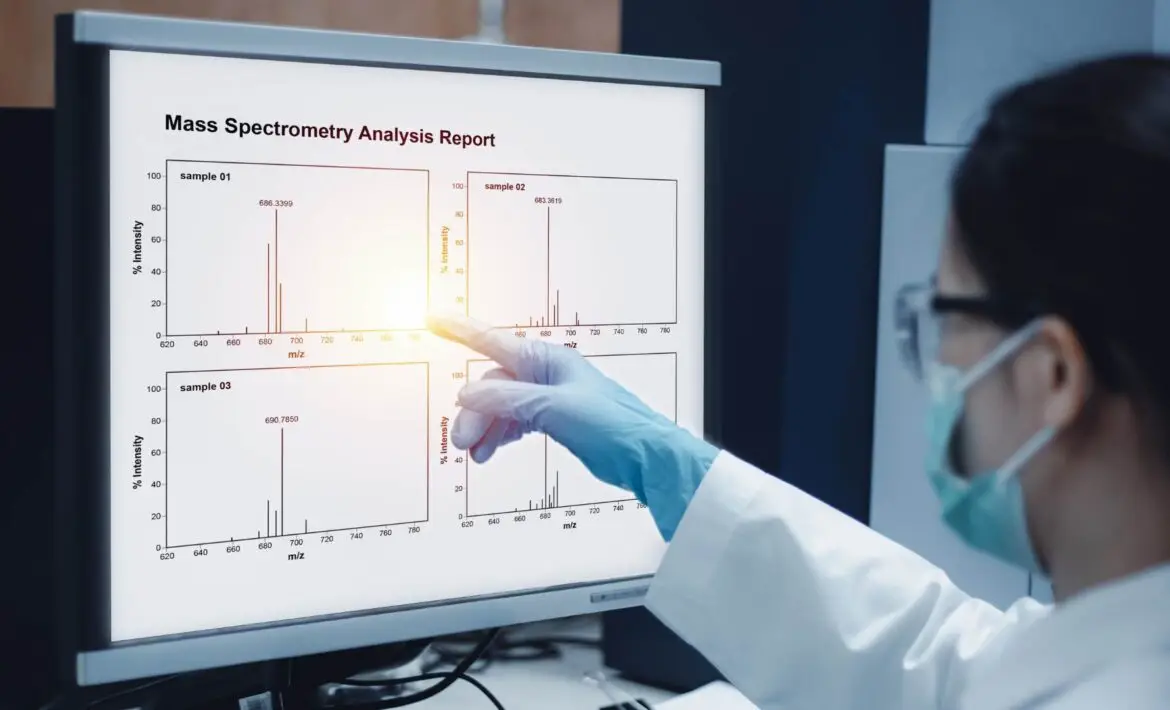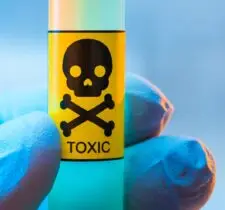Identifying drugs or poisons in biological specimens is an important aspect of forensic toxicology. The conventional approach to drug and poison identification has relied upon broad-based screening techniques that will indicate if substances may be present, so-called presumptive positives. These presumptive positives are confirmed with more specific techniques that allow for a definitive determination of a substance’s identity. More recently, a progressive new approach has been introduced to assign identification points to analytical methods based on their general specificity. Points awarded for the use of one or more analytical techniques are totaled to ensure a minimum numeric threshold is reached before the forensic toxicologist can declare identification of the substance.
Conventional Approach to Forensic Toxicology Drug and Poison Identification Begins with Screening
Forensic toxicology plays a pivotal role in legal investigations, helping to establish a connection between substance exposure and potential criminal activity, accidents, or cause of death. Screening for substances in biological samples is a crucial first step in the process of identifying the presence of drugs, poisons, or other toxic substances. The screening process involves the initial detection of a broad range of substances, which is followed by confirmation (and oftentimes quantification) through more specific methods.
Various biological specimens, such as blood, urine, hair, and tissues, can be analyzed in forensic toxicology. Specimen choice often depends on the substance being investigated and the time frame within which the exposure occurred. Blood and urine are commonly tested due to their accessibility and relevance in determining recent exposure. The primary goal of screening is to detect the presence of important substances efficiently in these biological samples.
Immunoassays are frequently employed in the screening phase of forensic toxicology. These tests are based on the interaction between antibodies and specific antigens, allowing for the detection of a wide range of substances. Enzyme-linked immunosorbent assay (ELISA), enzyme multiplied immunoassay technology (EMIT), and cloned enzyme donor immunoassay (CEDIA) are examples of popular immunoassay techniques used to screen for drugs in forensic toxicology. While immunoassays offer rapid results and adequate sensitivity, they may lack specificity, leading to potential false positives.
Color tests are also rapid and simple techniques used to provide preliminary detection of specific drug classes or compounds. These tests rely on characteristic color changes that occur when a chemical reaction takes place between the substance in question and a reagent. Common color tests include the addition of 1% o-cresol and ammonium hydroxide to acidified and heated urine to detect acetaminophen; the Trinder reagent for detecting salicylates; and the Fujiwara test to detect chloroform or chloral hydrate. While color tests offer quick results, they lack the specificity and sensitivity of more advanced techniques.
The Reinsch test is a specialized technique employed in forensic toxicology to detect the presence of certain heavy metals like arsenic and antimony in biological samples. To perform this screening test, a sample is treated with hydrochloric acid, and a then clean copper strip is introduced into the solution. If arsenic or antimony is present, a gray or black metallic deposit forms on the copper surface due to the reduction of these metals. While the Reinsch test is a relatively simple and rapid method for preliminary screening, it is insufficient for the unequivocal identification of these poisons. Therefore, confirmatory analyses using more advanced techniques are necessary.
Gas chromatography (GC) and liquid chromatography (LC) separate the components of a mixture based on their chemical properties. But to reveal the components to determine if they may be drugs or poisons, a variety of different detectors are connected to gas or liquid chromatographs. The choice of detector will allow for higher specificity and sensitivity of some analytes over others.
The choice between GC and LC depends on the chemical properties of the analytes. GC is particularly effective for volatile compounds, while LC is suitable for a broader range of substances, including polar and non-volatile compounds.
Detector selection for gas chromatography and mass spectrometry is also an important consideration for screening biological samples for drugs and poisons. Each detector has its advantages and limitations, so the choice depends on factors such as the type of compounds being analyzed, required sensitivity, and the specific analytical goals of the forensic toxicological testing.
A flame ionization detector (FID) is a popular detector with GC because of its high sensitivity to hydrocarbons, such as ethanol. A nitrogen-phosphorus detector (NPD) which, as the name implies, is particularly sensitive to nitrogen-containing compounds (e.g., basic drugs) and phosphorus-containing compounds (e.g., organophosphates). An electron capture detector is for compounds containing electronegative elements like halogens (e.g., chlorinated pesticides). Both the NPD and ECD are used with gas chromatographs. Ultraviolet-Visible (UV-VIS) spectrophotometer detectors are commonly used in liquid chromatography. They measure the absorption of ultraviolet or visible light by compounds with chromophores. Mass spectrometers (MS) are the most powerful detectors that can be used in both GC and LC. Mass spectrometers provide highly specific information about unknown chemical substances by measuring the mass-to-charge ratio of ions produced after they are ionized.
Two popular analytical techniques rely on inductively coupled plasma (ICP) for the detection and quantification of metals. ICP involves the atomization of a sample in a high-temperature plasma before being passed to the detector. An ICP may be connected to an Optical Emission Spectrometer (ICP-OES) or a mass spectrometer (ICP-MS) for the detection of trace amounts of metals.
Forensic toxicologists must carefully consider the sensitivity, specificity, and speed of screening methods to meet the requirements of investigations. Rapid screening methods are often used for these initial assessments, allowing for swift decision-making. False positives may arise due to cross-reactivity or interference from other substances, while false negatives can occur if the screening method lacks sensitivity for certain compounds. Because screening methods produce presumptive positive results, subsequent confirmation with more precise techniques is required before reporting these detected drugs or poisons as identified.
Presumptive Positive Results Must be Confirmed in the Conventional Approach to Forensic Toxicology Drug and Poison Identification
Confirmation testing in forensic toxicology follows the initial screening of biological samples for the presence of drugs, poisons, or other toxic substances. While screening methods provide a rapid and broad assessment, confirmation testing aims to validate and precisely identify the substances detected. This phase is essential for ensuring accurate results for legal and medical purposes.
The need for confirmation testing arises from the limitations of screening techniques. Confirmatory analyses employ methods with higher specificity and sensitivity, often using the more advanced technologies of chromatography coupled with mass spectrometry.
In gas chromatography-mass spectrometry (GC-MS), the sample is vaporized and injected into a gas chromatograph. The compounds are separated based on their volatility, and the separated components are then introduced into a mass spectrometer for identification by ionizing the substances into fragments. The mass spectrometer measures the mass-to-charge ratio of the ion fragments, producing unique mass spectra for most compounds.
GC-MS is particularly effective for volatile and semi-volatile compounds, including drugs and certain poisons. This combination of gas chromatography and mass spectrometry usually enables the confirmation of individual substances in a sample.
Liquid chromatography-mass spectrometry (LC-MS) involves the separation of compounds in a liquid phase, followed by their introduction into a mass spectrometer for identification. LC-MS is suitable for a broader range of compounds compared to GC-MS, including polar and non-volatile substances.
LC-MS is highly versatile and can be used for the confirmation of drugs, metabolites, and various poisons in biological samples. It offers excellent sensitivity and specificity, making it a nearly essential tool in modern forensic toxicology laboratories.
Inductively coupled plasma-mass spectrometry (ICP-MS) involves ionization of a sample in a high-temperature plasma. As the sample transitions to a gaseous state, the resulting ions are analyzed based on their mass-to-charge ratio. The technique allows for the sensitive and accurate identification of heavy metals for investigations of potential poisonings.
Advanced mass spectrometers are also available to further improve their specificity, sensitivity, and versatility. Triple quadrupole mass spectrometers involve the use of two mass spectrometers linked together with a third quadrupole that serves as a collision cell. Hybrid mass spectrometers include time-of-flight (TOF), ion trap (IT), and orbitrap mass spectrometers. These MS/MS techniques further enhance specificity by isolating and fragmenting target ions, thereby providing additional information about the structure of the analyzed compounds. Today, LC is nearly always combined with MS/MS instrumentation.
It is important to note that confirmation testing requires rigorous quality control measures to ensure the reliability and accuracy of results. This includes the use of validated methods and certified reference materials in the testing. Further, the interpretation of confirmation results requires expertise in pharmacology, toxicology, and analytical chemistry. Forensic toxicologists must consider the pharmacokinetics of substances, potential metabolites, and the impact of individual variations in metabolism on the results.
The conventional approach of identifying drugs and poisons in forensic toxicology relies on the confirmation step to eliminate false positives, thus providing robust, specific, and defensible results.
A Progressive Approach to Forensic Toxicology Drug and Poison Identification
The conventional approach of broad-based screens followed by confirmation techniques has stood the test of time. However, the concept can readily fail if a laboratory chooses to use confirmatory techniques with insufficient specificity. This can lead to the reporting of false positive results.
In the last two decades, a different approach has started to gain traction. The concept involves the assignment of identification points to different analytical techniques based on the general specificity of the technique and then requiring that a minimum number of identification points be reached before a substance is identified.
The idea of identification points was first widely supported by the European Union Commission in their “2002/657/EC” decision regarding the rules for analytical methods when testing animals and animal products for banned substances. The EU approach focused only on confirmatory chromatographic methods coupled with mass spectrometry and identification point assignment was based on the general specificity of the various mass spectrometric techniques. Confirmatory analyses were required to achieve a minimum of three identification points to report the presence of veterinary drugs and contaminants, while a minimum of four points were required to report substances with anabolic effects and other unauthorized substances.
Following the 2002 EU Commission decision, other disciplines began shifting to identification points to demonstrate that sufficient analytical data was generated for the identification of substances. One area that began supporting the approach was in anti-doping testing of athletes for their use of banned, performance-enhancing substances. Globally, other areas of forensic toxicology also showed early support for the concept of identification points, as seen in numerous peer-reviewed scientific publications following the 2002 EU Commission decision.
Recently, the American Academy of Forensic Sciences Standards Board (ASB) published the first American National Standard for the identification of analytes during forensic toxicology testing. While the standard of practice excuses a few analytes from its requirements (e.g., ethanol, carbon monoxide, cyanide, and metals), the identification of most drugs, metabolites, and poisons requires that a minimum of four identification points be generated from no more than three analytical techniques. In contrast to the European Commission decision, the American forensic toxicology version focuses on the entirety of the analytical scheme used. Non-mass spectrometric techniques, such as immunoassays and color tests, earn the fewest number of points, while advanced mass spectrometric techniques coupled to a GC or LC are awarded the highest number of points. A minimum of four points are required to identify a substance.
An important concept to recognize is that ANSI/ ASB Standard 113, Standard for Identification Criteria in Forensic Toxicology (ANSI/ASB Standard 113) generally supports the more conventional “screening followed by confirmation” approach. Points are gained for conventional screening and confirmation techniques. However, the advent of newer, more advanced mass spectrometers finds laboratories moving directly to these highly specific instruments earlier in the analytical process, thereby reducing the “non-specific screening” concept. ANSI/ASB Standard 113 allows for this practice, provided the analytical methods employed are fully validated and appropriate quality assurance steps are implemented.
Conclusions
No matter the approach taken, unequivocal identification of a drug or poison is paramount in forensic toxicology investigations. Toxicology findings have a direct implication for legal and medical decisions. Ensuring accuracy in substance identification is crucial for establishing a clear link between exposure and potential criminal activity, accidents, or a cause of death. Mistaken identifications can lead to false accusations or the overlooking of critical information. The stakes are high, and unequivocal identification is foundational in delivering justice and safeguarding public health.





